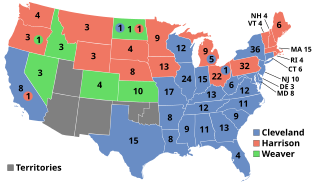
Presidential elections were held in the United States on November 8, 1892. In the fourth rematch in American history, the Democratic nominee, former president Grover Cleveland, defeated the incumbent Republican President Benjamin Harrison. Cleveland's victory made him the first president in American history to be elected to a non-consecutive second term, a feat not repeated until Donald Trump was elected in 2024. This was the first of two occasions when incumbents were defeated in consecutive elections—the second being Gerald Ford's loss in 1976 to Jimmy Carter followed by Carter's loss in 1980 to Ronald Reagan. The 1892 election saw the incumbent White House party defeated in three consecutive elections, which did not occur again until 2024.
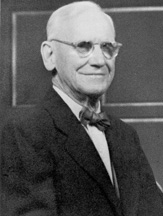
William Henry McMaster was an American politician who served as the tenth Governor of South Dakota from 1921 until 1925. A member of the Republican Party, he went on to serve as a member of the United States Senate from South Dakota from 1925 to 1931.

Andrew Horace Burke was an American politician who was the second governor of North Dakota from 1891 to 1893.
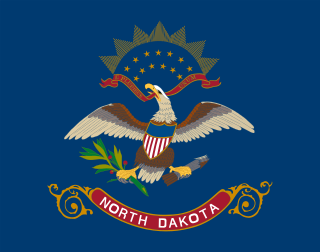
The politics of North Dakota were shaped historically by early settlement by people from the Northern Tier, who carried their politics west ultimately from New England, upstate New York, and the Upper Midwest. The area and state also received numerous European immigrants and migrants, particularly during the era of opening up of former Native American lands for sale and settlement.
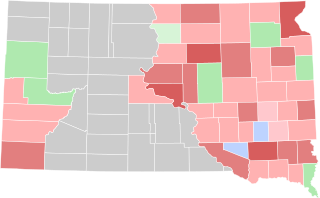
The 1892 South Dakota gubernatorial election was held on November 8, 1892. Incumbent Republican Governor Arthur C. Mellette declined to seek re-election to a third term. Former territorial legislator Charles H. Sheldon was nominated by the Republican Party as Mellette's replacement, and he faced former legislator Abraham Lincoln Van Osdel, a leader in the South Dakota Farmers' Alliance and the nominee of the Independent Party, along with Democratic nominee Peter Couchman, in the general election. The result was largely a replay of the 1890 election, with Sheldon winning by a large margin, but only a plurality, and Van Osdel taking second place over Couchman.

The 1914 United States Senate election in North Dakota took place on November 3, 1914. Incumbent Senator Asle Gronna, a Republican, sought re-election in his first popular election. Against several strong challengers, he won the Republican primary, though only with a plurality. In the general election, he faced former U.S. Senator William E. Purcell, the Democratic nominee. Gronna ultimately had little difficulty defeating Purcell to win re-election.
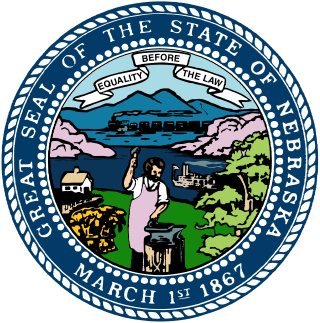
The 1954 Nebraska gubernatorial election was held on November 2, 1954, and featured Mayor of Lincoln Victor E. Anderson, a Republican, defeating Democratic nominee, attorney William Ritchie.

The 1944 North Dakota gubernatorial election was held on November 7, 1944. Republican nominee Fred G. Aandahl defeated Democratic nominee William T. DePuy with 52.02% of the vote.

The 1936 North Dakota gubernatorial election was held on November 3, 1936. Nonpartisan League nominee William Langer defeated incumbent Republican Walter Welford with 35.80% of the vote.

The 1934 North Dakota gubernatorial election was held on November 6, 1934. Democratic nominee Thomas H. Moodie defeated Republican nominee Lydia Cady Langer with 52.98% of the vote.

The 1932 North Dakota gubernatorial election was held on November 8, 1932. Republican nominee William Langer defeated Democratic nominee Herbert C. DePuy with 54.75% of the vote.
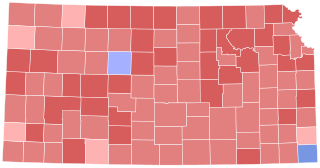
The 1942 Kansas gubernatorial election was held on November 3, 1942. Republican nominee Andrew Frank Schoeppel defeated Democratic nominee William H. Burke with 56.68% of the vote.

The 1912 North Dakota gubernatorial election was held on November 5, 1912. Republican nominee L. B. Hanna defeated Democratic nominee Frank O. Hellstrom with 45.45% of the vote.

The 1910 North Dakota gubernatorial election was held on November 8, 1910. Incumbent Democrat John Burke defeated Republican nominee C. A. Johnson with 49.96% of the vote.

The 1908 North Dakota gubernatorial election was held on November 3, 1908. Incumbent Democrat John Burke defeated Republican nominee C. A. Johnson with 51.06% of the vote.

The 1892 North Dakota gubernatorial election was held on November 8, 1892. People's Party nominee Eli C. D. Shortridge defeated incumbent Republican Andrew H. Burke with 52.43% of the vote.

The 1889 North Dakota gubernatorial election was held on October 1, 1889. Republican nominee John Miller defeated Democratic nominee William N. Roach with 66.58% of the vote.

The 1892 Idaho gubernatorial election was held on November 8, 1892.
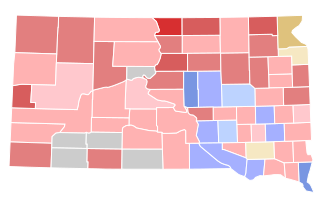
The 1922 South Dakota gubernatorial election was held on November 7, 1922. Incumbent Republican Governor William H. McMaster ran for re-election to a second term. After beating back a challenge in the Republican primary from perennial candidate George W. Egan, McMaster advanced to the general election, where he faced former State Senate President Louis N. Crill, the Democratic nominee, and suffragist Alice Lorraine Daly, the Nonpartisan League's nominee, and the first woman to run for governor. McMaster won by a large margin, but the race was considerably narrower than the 1920 election.

The 1924 South Dakota gubernatorial election was held on November 4, 1924. Incumbent Republican Governor William H. McMaster declined to run for re-election to a third term, instead opting to run for the U.S. Senate. Lieutenant Governor Carl Gunderson won the Republican primary unopposed. In the general election, he faced three prominent opponents: Democratic nominee William J. Bulow, a former State Senator and Mayor of Beresford; Farmer–Labor nominee A. L. Putnam; and perennial candidate Richard O. Richards. Gunderson. With the left-leaning vote split, Gunderson won the election in a landslide.
























